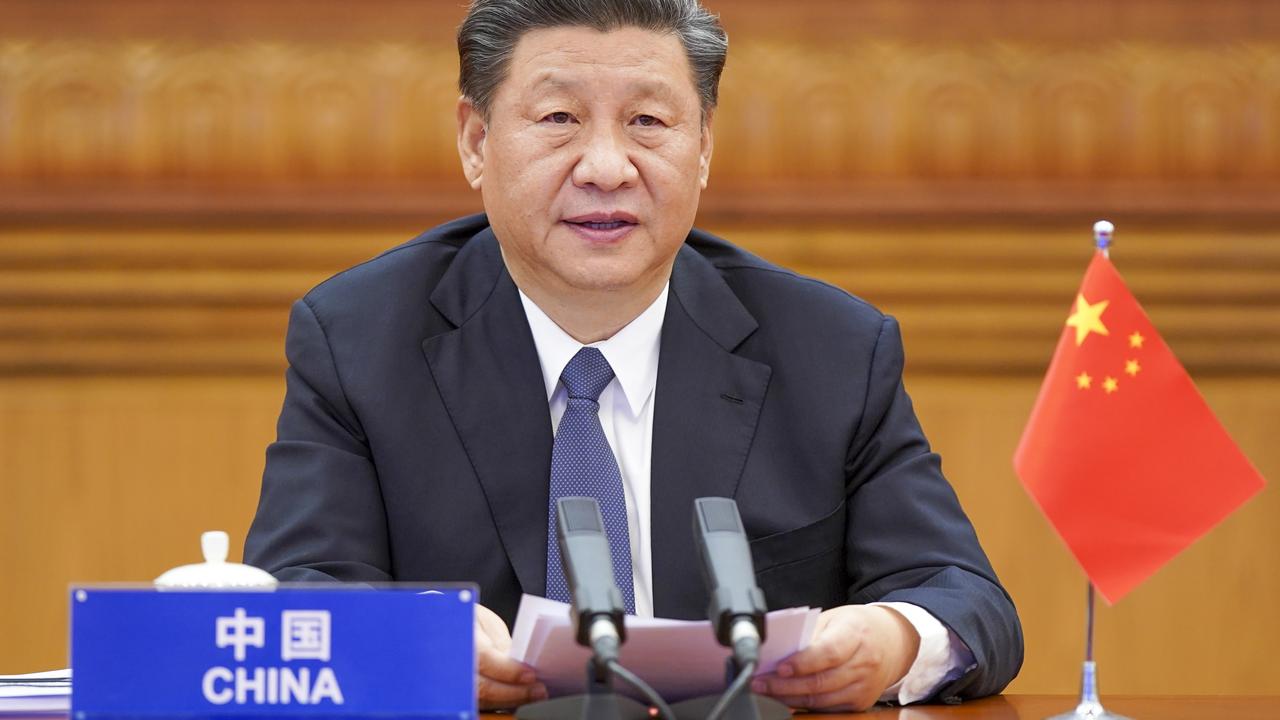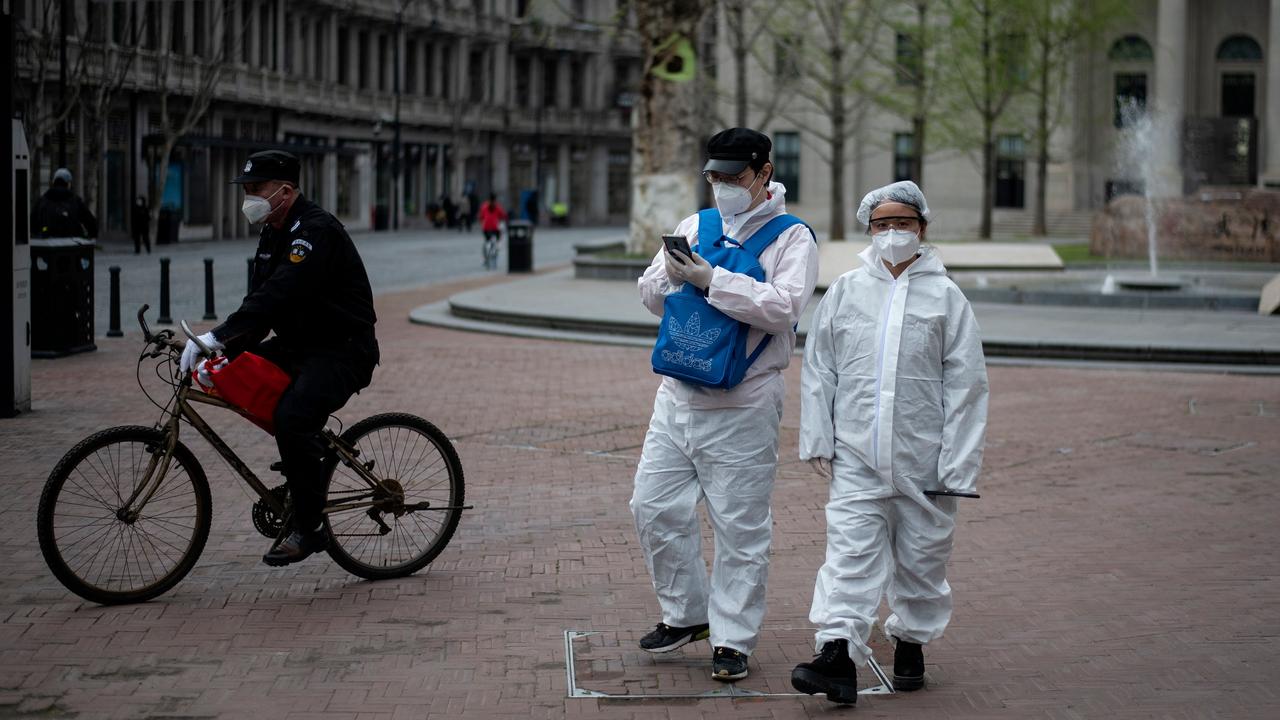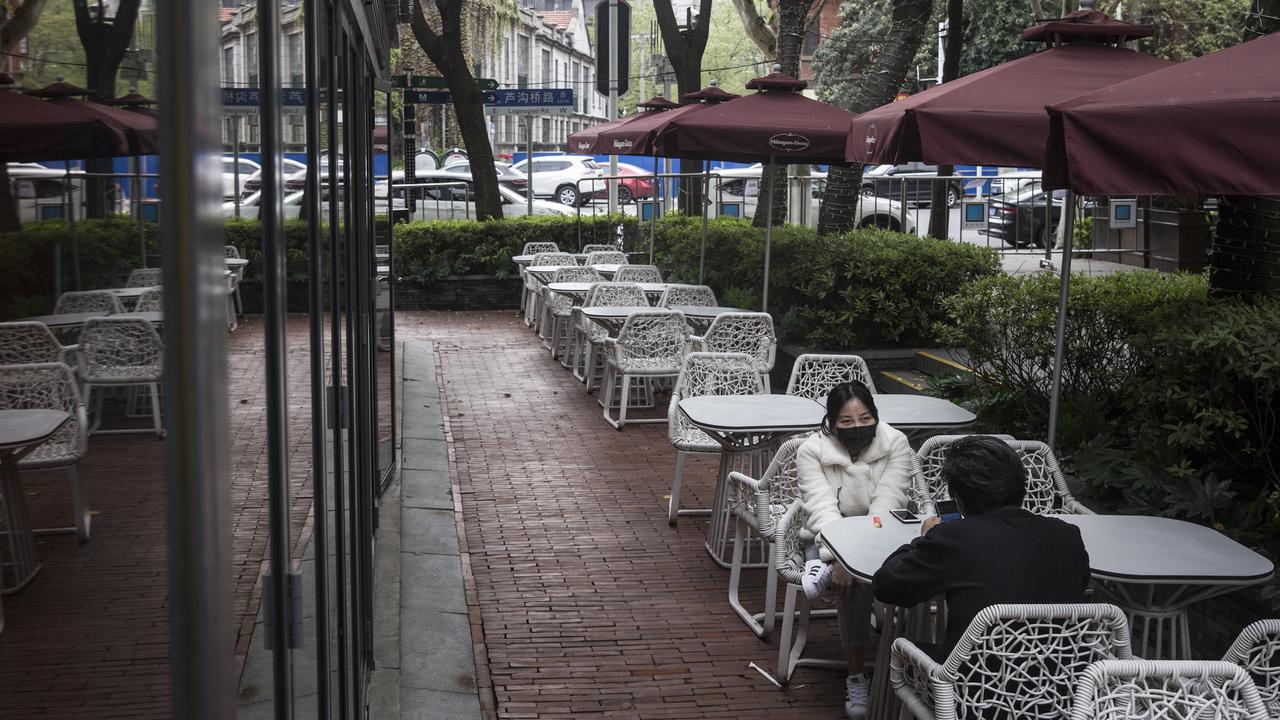Coronavirus: Fears of ‘second wave’ in China as imported cases rise
The easing of intense distancing measures and a growing number of imported cases has authorities concerned about a “second wave” of infections.
A county home to hundreds of thousands of people in central China has been put in total lockdown as authorities across the country remain on high alert for a potential “second wave” of the coronavirus.
China has reported a decline in domestic cases of COVID-19 however the National Health Commission on Wednesday reported 36 new infections. All but one of those was imported.
In comments published yesterday, President Xi Jinping said China must “build a solid line of defence against the risks of overseas epidemic” and allow no loopholes.
He also urged better management of symptom-free cases which China has only this week started to disclose. In addition to the infections, there were 130 asymptomatic cases reported on Wednesday.
The NHC said 1367 asymptomatic patients were under medical observation.
RELATED: Follow the latest coronavirus updates


RELATED: US officials claim China’s figures are fake
A comprehensive ban on foreign travellers came into force on Saturday and international flights have been significantly slashed.
“The suspension is a temporary measure that China is compelled to take in light of the outbreak situation and the practices of other countries,” the Chinese Foreign Ministry said in a statement quoted by Newsweek.
Richard McGregor, a senior fellow for East Asia at the Lowy Institute in Sydney, told the South China Morning Post the decision was “understandable given the dangers of a second wave of infections”.
“But next time, when other countries take action to protect themselves, Beijing might be more restrained in its criticism,” he said.
“At the time, Beijing accused other countries of everything from overreacting to borderline racism. That was wrong, and it would be good if they acknowledged that rather than always claiming to occupy the high moral ground.”

Millions of people in China have signed up to phone apps – run on the platforms Alipay and WeChat and developed for the Chinese government – to obtain a “health code”.
They are assigned either a green, yellow or red QR code which dictates their freedom of movement. Analysis by The New York Times found in late February, almost 90 per cent of people in the Zhejiang province had signed up, with 98.2 per cent assigned green codes, leaving nearly a million people classed as yellow or red.
Despite the lifting of lockdown restrictions, spokesman for the Beijing government, Xu Hejian, said: “Beijing, the capital, still bears the brunt of the risks.”
"There's no reason to lay back and relax yet. It's not a time when we can say everything is going well,” he said.

A study in British medical journal The Lancet Public Health recommended that China extend school and workplace closures, since an earlier relaxation could bring a second peak in the outbreak by August.
“Their model indicates that if the physical distancing measures begun in late January 2020, in Wuhan are gradually relaxed in March, the virus could start to resurge three months later in June, and generate a second peak five months later at the end of August 2020,” Associate Professor Dr Tim Colbourn, from University College London’s Institute for Global Health, said last week of the study.
“However, if measures were relaxed a month later in April 2020, the resurgence would start an additional two months later, in August 2020, and peak in October.
“Their projections suggest that an additional month of physical distancing measures (or other methods, such as widespread testing) could buy two additional months before such measures would have to be reinstated to prevent the resurgence of the epidemic toward healthcare system overload.”
China has delayed its national college entrance exam by a month, to July 7 and 8, due to the virus outbreak.
China Central Television reported that Hubei province and Beijing have been given more leeway in regards to timetables for the two-day “gaokao” tests, taken by more than 10 million students in 2019.
"China has slowed transmission of the virus and in so doing, has passed one peak in the outbreak," said Tarik Jasarevic, a representative of the World Health Organisation.
"The challenge now is to prevent a resurgence of new cases."
The epidemic in the Asia-Pacific region was "far from over", another WHO official added.

Meanwhile, the SCMP reports “curfew-like measures” came into effect in Jia county in Henan province on Tuesday, around 500 kilometres north of Hubei where the coronavirus outbreak began in the city of Wuhan.
The publication said there were news reports of three confirmed cases of infection in the county’s hospital on Sunday after a doctor, who returned from Wuhan in January and then self-isolated, apparently passed the virus on while asymptomatic.
About 600,000 residents have been told to stay in their homes and must have special permits to go out while businesses have been shut down and only shops providing essential supplies remain open.
“Nobody can enter or leave,” an official of the country’s transport office told the English-language newspaper.
With Reuters



